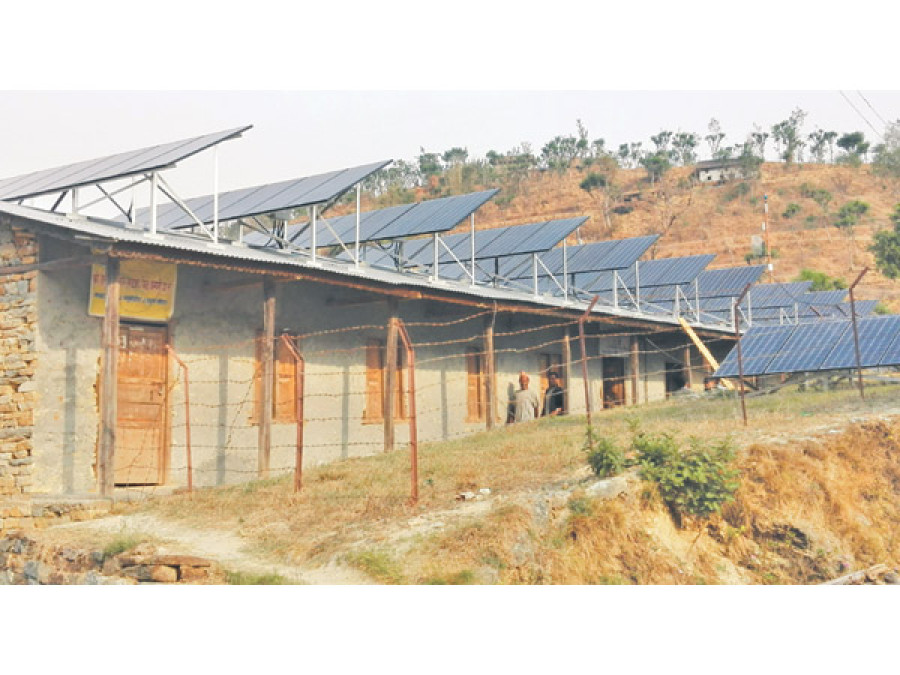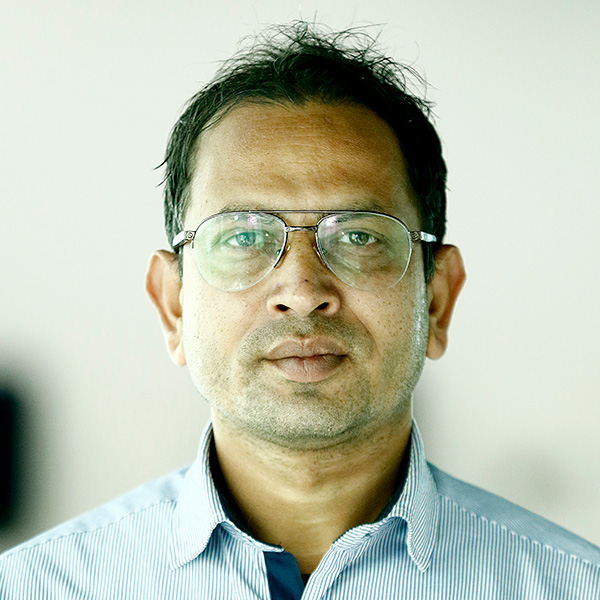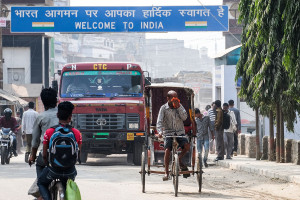Money
Micro solar grids brighten off-grid rural communities
Micro solar grids have brightened the lives of rural communities in Nepal which until recently had to depend on solar panels or gasoline-powered generators. Now electricity generated by solar power comes to their homes through transmission lines.
Sangam Prasain
Micro solar grids have brightened the lives of rural communities in Nepal which until recently had to depend on solar panels or gasoline-powered generators. Now electricity generated by solar power comes to their homes through transmission lines.
Chattra Bahadur Karki, a local of Bahuni Danda, Kaduwa of Khotang district, had two solar bulbs in his home which were too dim to be of any benefit. He had purchased a small solar panel for Rs15,000 five years ago.

Like Karki, many villagers in Khotang and neighbouring Okhaldhunga, where the national electricity grid has not yet reached, have been using small solar panels that produce just enough energy to light a bulb and charge a mobile phone for a few hours. Hotels and small businesses have been using kerosene and diesel to power generators.
Last February, a private company backed by Asian Development Bank (ADB) funding brought power to the people. Gham Power Nepal installed a micro solar grid—the first of its kind in Nepal—to supply solar energy commercially using transmission lines. Off-the-grid villages now see micro grids as the answer to the energy crisis.
Three solar micro grids with a combined capacity of 35 kW were installed in the communities of Harkapur in Okhaldhunga district and Kaduwa and Chyasmitar in Khotang district. They provide 24-hour reliable electricity supply to around 540 people in 83 households and 25 local businesses.
Kaduwa got a 21-kW solar power plant and connected 31 households with a 3-km-long transmission line thanks to the innovative efforts of Gham Power Nepal, which was selected in the 2013 ADB Energy for All Investors Forum in Nepal.
“We did not know that solar energy could be distributed to every household through transmission lines like hydro electricity. But technology is amazing,” said Karki, one of the beneficiaries of Halesi Solar Minigrid Company, a private-community based business model company.
Karki has purchased 20 watts of solar power and has to pay Rs250 per month. “Now I can light four to five bulbs, charge a mobile phone and operate the radio and other accessories for at least four hours in the evening,” said Karki.
The company supplies solar energy based on the customer’s requirement and payment.

“It’s a prepaid or pay-as-you-go system. You can get the energy you need as per the payment you make,” he said.
According to Halesi Solar Minigrid, a household needs to pay Rs250 per month for 20 watts of power a day. Customers pay Rs500 and Rs1,000 per month for 100 and 200 watts respectively, enough to operate a TV and refrigerator. Commercial users pay Rs2,000 and Rs5,000 per month for 1,000 watts and 2,000 watts of electricity respectively.
Padam Kumari Gautam of Harkapur, Okhaldhunga is another beneficiary of the Halesi Solar Minigrid where a 9-kW solar panel has been installed. The project has benefited 42 households in Harkapur.
“My home is now connected to the solar grid,” said 60-year-old Gautam. “We had purchased a 20-watt solar panel five years ago at a cost of Rs30,000,” she said.
“The solar panel installed on my rooftop has become old and the lights are very dim,” Gautam said. “But this time we are not worried as the Halesi Solar Minigrid is there now,” she said. “Now it does not feel like we are living in darkness. And the children are studying well.”
However, many villagers feel that the cost of solar electricity is too high for poor households.
Started two years ago and on a test run since January, the micro grid is expected to replace 4,546 kilolitres of diesel and kerosene and reduce 41 tonnes of carbon dioxide emissions per year.
“These pilot projects will be the answer to the policy and vision paralysis that Nepal’s energy sector faces today,” said Ram Prasad Dhital, executive director at the Alternative Energy Promotion Centre.
“It’s a unique project in Nepal that the private sector has initiated. Villages deprived of energy can benefit from the quick-to-install solar micro-grid which could also be the correct way to address the energy crisis.”




 10.12°C Kathmandu
10.12°C Kathmandu















